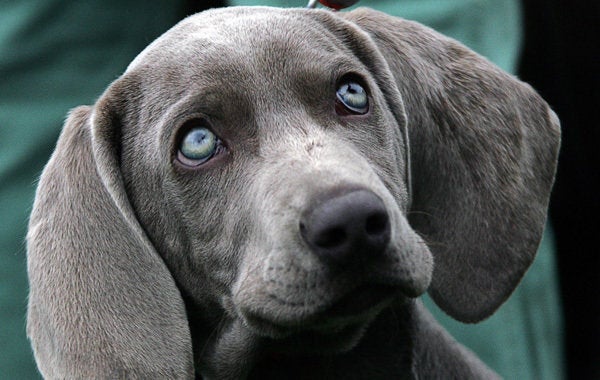
Once in my life I worked on a political campaign and once in my life met someone who called himself a "goop scooper." My candidate and I were touring a chicken processing factory. As chicken carcasses acrobatically clung to the rotating belt that dropped them in a vat, the man who removed their insides told me he was the "goop scooper."
The vividness of the picture has not faded. Not since the high school assignment of Upton Sinclair's The Jungle had I been forced to confront the prelude to the cellophane wrap. Shortly after visiting the factory I wrote a humor column about it for my college newspaper. After all, if you want to dash a feeling, nothing works better than a joke. "Wit" as Nietzsche observed, "closes the coffin on an emotion."
But can one investigate the whole question of eating other animals unflinchingly, movingly but with wit? Can it be made interesting, readable, compelling -- powerful without self-righteousness? In other words is there a book to be written that might change the way we eat that vegetarians and devoted carnivores alike would want to read?
Here it is. Jonathan Safran Foer's Eating Animals is a triple marvel: the research is serious and far reaching, the writing clear, clever, accessible and in a few instances graphically ingenious, and the cause is genuinely important.
Foer does not indict all animal-eating on simplistic grounds. This is not, paradoxically, a bleeding heart book, except in the most sanguinary sense. It is a tough-minded look at what the gradual triumph of factory farming has done to the quality of the food we eat. Quality here is a ramified term, including its effect on the natural world and the animals who endure unspeakable conditions, ailments and anguish so that we can have more and more fish, poultry, pork and beef.
Some of the facts that Foer quotes we are vaguely familiar with:
- "In the United States, about 3 million pounds of antibiotics are given to humans each year, but a whopping 17.8 million pounds are fed to livestock -- at least that's what the industry claims." Foer goes on to point out that the Union of Concerned Scientists concluded the industry underreports by 40%.
On some level we know all this. But we may not realize the devastation wreaked by factory farming. Apart from the hormones, the antibiotics, and the selective breeding that creates animals that produce more meat but live in constant pain, there is the cost to us as well. Here is the best case scenario of what most animals we eat have to endure on their trip to dinner: "Or try this thought experiment: Would you castrate animals without pain relief? Would you brand them? Would you slit their throats open? ...Let's describe the reality: that piece of meat came from an animal who, at best -- and it's precious few who get away with only this -- was burned, mutilated, and killed for the sake of a few minutes of human pleasure."
We do not know the deceptiveness of terms like "free range." The term suggests chickens roving free like the Von Trapp family, warbling atop the alps until they are painlessly gathered into the Valhalla of Whole Foods. Actually, free range chickens can still be "...debeaked, drugged, force moulted, and cruelly slaughtered once 'spent.' I could keep a flock of hens under my sink and call them free range."
The cost in human suffering may have escaped us. "The UN special envoy on food called it a 'crime against humanity' to funnel 100 million tons of grain and corn to ethanol when almost a billion people are starving. So what kind of crime is animal agriculture, which uses 756 million tons of grain and corn per year, much more than enough to adequately feed the 1.4 billion human who are living in dire poverty?"
Remember that 99% of all land animals used for food are factory farmed. We have created a colossal churning machine to spit out pork chops and chicken nuggets.
There is much more of interest, and some striking and even beautiful images along the way. But ultimately the message of the book is summed up in Foer's simple observation: "It's always possible to wake someone from sleep, but no amount of noise will wake someone who is pretending to be asleep." I hope he is wrong. I hope this book falls with an explosive charge on the somnolent consciences of meat-eating Americans. We know something of the agony, waste, disease and unhealthiness behind the gleaming counters. Perhaps Eating Animals will persuade us to stop pretending to be asleep.